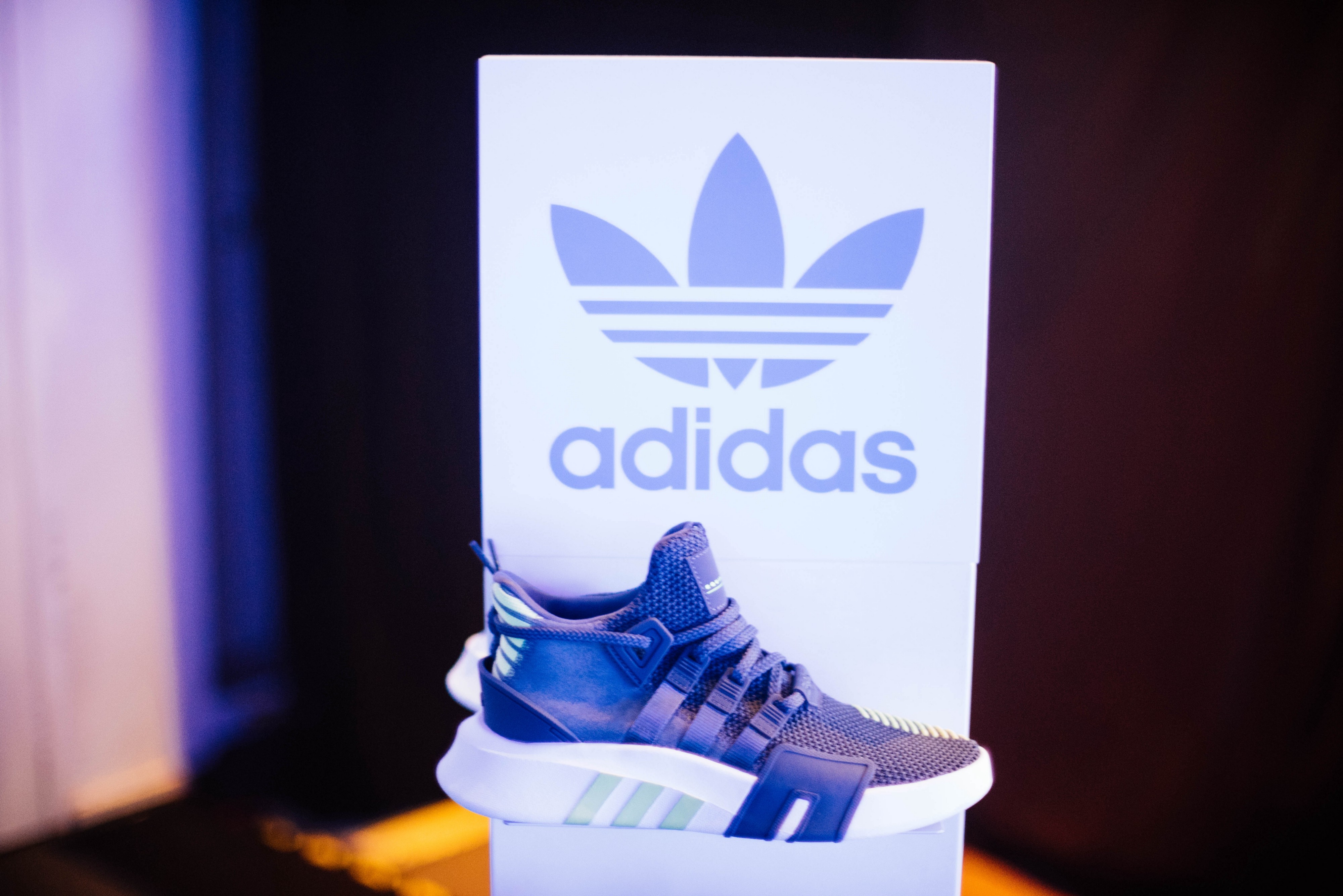Ancient marketing tip: ?An unpromoted product goes unsold?
 Photo by chuttersnap on Unsplash
Photo by chuttersnap on Unsplash
Promotion is the bread and butter of the marketer and always has been.
While technology and social developments may shift the methods of promotion, the basic concept of promoting your product, service, or business remains the same.
Promoting your product or service can seem daunting at first. You may feel as though you don?t have the skills or confidence to do it, or you might be modest about your business.
Don?t.
You have the skills, or at least the ability to develop the skills you need, and you can choose which way to promote best suits where you feel your skills lie.
Promotion is key to selling your products, raising awareness of your brand (business or personal), and growing your business.
Brace yourselves ? this is going to be a long one!
1. Samples
Samples are a great way of enticing new customers and reinvigorating the enthusiasm of existing or lapsed customers.
When arranging samples, consider how much you?re giving away (for free or for a small charge), making sure that you?re not giving them too much.
For example, if you?re selling a face moisturiser, you want to give your customers enough for one (or a few) uses, but not so many that they won?t need to actually purchase your product.
Samples are particularly effective for consumables, like food, cosmetics, and personal care products.
Anyone can use samples to promote their product. You just need to package your sample, get a stock of them, and get them to your customers.
You could give away samples at conventions, trade shows, in stores, in a pop-up shop, online, or even on the street ? just be sure to check with your local council for trading license information.
2. Offers
The word offers could mean just about anything, in the right context. In this context, I mean it as a discounted price for your customers.
There are several different types of offer, and it depends on what your products are which one is best suited to you:
- Buy one, get one free (BOGOF) ? For items where customers will likely need more than one, or where they can get items as part of a set. You can also change this offer so it?s ?Buy two/three/more, get two/three/more free?, depending on your product and profit margin.
- XX% off ? Ideal for single-purchase items, usually higher in price. Make sure that this discount is good enough that the customer will benefit from the cheaper price, but not so discounted that your profit margin suffers. Interestingly enough, according to Pricing Intelligently, customers would prefer a ?Buy one, get one free? offer over two items for 50% off ? something to consider.
- Introductory offer ? Great for subscription products or products that people will repeat-purchase. Start out with a heavily discounted introductory offer, then increase the price. You can also increase the price incrementally to encourage further purchases.
- Flash sale ? A site or store-wide promotion, featuring heavy discounts across several items. Useful for getting rid of old stock to make room for new stock.
- /$/?XX off ? A set amount of money off, depending on the product, can grab the attention of the customer and change a ?maybe? to a ?yes?. To help you determine what to set your new offer price at, Pricing Intelligently has suggested that figures that end in 0 denote more premium items, and prices ending in 9 are usually seen as more basic items.
- Coupons ? These could be BOGOF, XX% off, or even XX off discount offers, but they?re just physical coupon versions of them. Single-use coupons, or coupons with an expiry date, add a sense of urgency to the customer. However, you must consider the impact on the environment. If the offer could work for you as an email, send the email instead.
Of course, with all of these offers, you need to consider your profit margin. Don?t go out of pocket with a too-generous offer.
You can also run some tests to find out which offers work best for your business. It?s easier to do a test with an online store, as you can send A/B testing emails to a list of customers to see which offer performs better.
3. Loyalty Programmes
I love loyalty programmes.
You name it: Nectar card, Tesco Clubcard, Superdrug, Boots, Bodyshop, Waterstones, Pets at Home? I?ve got them all!
And I regularly shop at all of those places!
Simply put, loyalty schemes work.
There are a few different ways you can organise a loyalty programme, but they all have the same idea: keep the customer shopping with you with regular discounts.
Point-based system
My personal favourite is point-based systems like Nectar, where each purchase you make (where you use the card) adds up and you can save your points for bigger purchases or spend them regularly.
The point-based cards give customers extra flexibility to spend their points where they want, and, if you have the resources, you can even track exactly what purchases that customer makes, so you can send them targeted offers based on their previous purchases ? everybody wins!
Point-based cards are great for both online and brick-and-mortar businesses but can be difficult to run, particularly for small businesses.
Stamp cards
Alternatively, you can use stamp cards.
These are cheaper to run and easier to track.
The onus is usually on the customer, so if they forget their card or forget to use it, then they miss out.
Of course, you can give customers gentle reminders, to go the extra mile and encourage them to keep coming back.
Stamp cards are often used in independent shops, fast-food restaurants, and cafs, in printed form.
However, online businesses can use them too, by tracking each customer?s purchases and advising them when they hit a milestone.
VIP programme
This is one for the premium customers ? the ones who are willing to pay extra for that platinum, gold star, VIP treatment.
For example, VIP members of a theatre could get preferential seating, Champagne, and the chance to meet the performers backstage after the show.
An added bonus of VIP programmes is that non-VIP customers will see the VIPs and think to themselves, ?I gotta get me a piece of that!?.
Just make sure you advertise your loyalty scheme. Otherwise, your customers won?t keep coming back!
4. Events (Trade Shows, Conventions, and Conferences)
I?ve had a lot of experience setting up and working at trade shows, conventions, and conferences, and while they are costly, they can be hugely beneficial to the right businesses.
I?ve found that service-based businesses don?t do as well as actual product-selling businesses at events.
Customers like to see what they?re buying at events ? they like to leave with something tangible.
Unless you can fulfill your service then and there, I wouldn?t recommend exhibiting at an event, unless that event is specifically for other services like yours.
It?s also worth considering how you interact with your customers directly. If you?re a bit awkward or dread the thought of large crowds, then maybe events aren?t the best method of promotion for you and your business.
Although having said that, you can hire staff to sell your product for you, but they won?t know your product as you would ? more often than not, you?re the best person to sell your product.
Here?s an example of events done right:
I?ve attended and worked at a lot of conventions over the past ten years, across a whole range of topics, most of them at the London Olympia venue.
Almost every time I?ve been there, I?ve seen the Custom Cupcake Company ? it?s always the same guy at the stall, and I always stop by to buy far too many cupcakes and bits of fudge.
They taste amazing, and the guy who runs the stand is so chatty and amiable that I keep coming back! They even make customised cupcakes, depending on the event ? for a convention for The Walking Dead, they had zombie-themed cupcakes that looked ghoulish but, of course, tasted divine.
Even as I?m writing now, having recently attended DragWorld UK, I?m biting into a super-sparkly rainbow cupcake with absolutely no regrets.
I?m now on the hunt for the Custom Cupcake Company at every convention I go to ? now that?s loyalty.
For more info on making the most out of your event, check out my article ?10 Tips to Make Your Trade Show Stand a Success.?
5. Competitions
I?ll admit it. I?ve taken part in competitions by companies that I have no interest in purchasing from. Most of the time, I won?t purchase from them ? ever.
But there are those few that catch my eye. Companies that I didn?t know about before, but stumbled across when a friend has shared a social media status, or (as much as I hate it) tagged me in a post, or even from my own random competition-hunting sessions.
Competitions are a great way of increasing awareness of your brand.
Don?t expect any immediate sales from them, but instead get customers to sign up to newsletters, follow you on social media, or share a post (just please don?t get them to tag others ? it?s very annoying to be tagged).
Again, as with events, it?s better to have a tangible, physical product as a competition prize. People like to hold their prize, rather than have to trust a company that they may not have heard of to fulfill a service that they aren?t sure will actually happen.
If you?re a service-based organisation or a high-price product business who wants to see how a competition promotion would perform to raise awareness, you can do a partner competition.
A partner competition is exactly what it sounds like ? you find a partner to work with for a promotion and make the prize one of their products.
For example, a car dealership isn?t likely to want to give away a new car in a competition, but they could partner up with a car-washing product manufacturer and give away a car-washing kit.
A word of warning: If you?re promoting a competition on social media, be sure to check their terms and conditions on how to run your promotion, so you don?t get caught out.
6. Personal Selling
Personal selling is when you meet with a potential customer to, essentially, sell your product or service.
Personal selling is an effective promotional method for higher-priced products or services, where you can justify the cost and time it takes to visit a (potential) customer.
It?s a great way to build confidence, and if you?re enthusiastic about and know your product or service inside out, you?re probably better at personal selling than you think!
Here are some quick tips on how to get the most of your personal selling:
- Cold calls aren?t as effective as they used to be. Establish a connection before you jump straight in with the sales pitch.
- Research your potential customer, and know which of your product benefits suit them and what their business is (if applicable).
- Use eye contact. If you?re avoiding their eye, they simply won?t trust you.
- If you?re not feeling confident, practice a few sentences selling your product. Just make sure that they?re conversational enough that they?re not obviously recited.
- Consider introductory offers ? as mentioned above.
- Go to them, don?t make them come to you.
7. Online Advertising
Gone are the days of those super-annoying pop-up, flashing, alarm-ringing online adverts.
Alright, so they?re not totally gone, but they?re hardly as prevalent as they were in the internet?s early years.
Now, online advertising, like PPC (pay-per-click) and SEM (search-engine-marketing) is so much more targeted, cheaper, and so much easier for businesses to manage.
There?s so much to online advertising that I can?t cover in this big list, so I?ll be doing a bigger article focusing just on that later in the year.
Pretty much any business can benefit from online advertising, and anyone can learn ? you don?t have to be a technical wizard!
Start small, with a small amount, set yourself an achievable goal in a specific time period (make it SMART: Specific, Measurable, Achievable, Relevant, and Timely) and keep tweaking and testing.
8. Print Advertising
Another costly addition to this list.
Print advertising is, unfortunately, not as big as it used to be. But it can be effective.
Even though there are fewer people buying print ? newspapers, magazines, and such ? that just means that the audience for your adverts is more targeted.
As with events, you need to research the publication before you even consider taking an advert.
You also need to set a specific goal for the advert ? what is its purpose?
Are you boosting your brand awareness? Set up an easy URL so they can follow you on social media, or give them a special offer when they sign up for your newsletter.
Aiming to get direct sales from the magazine? Arrange for a special offer specific to that publication with an offer code or coupon.
Research the publication and set yourself SMART goals.
Then, when it comes to creating your advert, don?t skimp on the design. Adverts with Comic Sans font or poorly designed layouts are distracting and can negatively impact your brand, so it?s worth investing in a graphic designer to create your advert.
As I mentioned before, print adverts can be costly, so it?s up to you to decide whether you think it?s worth it.
9. Video Advertising
I was initially going to tie this in with social media, but it?s worth having its own spot on this list, since you can use videos on your own website, too.
As you may have seen/heard, video is huge online.
And there are dozens of statistics to back this up ? here?s a small snippet for you:
- Videos in emails increase click-through rate by two to three times (source: Forrester)
- 52% of product-centric video watchers share those product videos (source: the e-tailing group)
- Videos on social media get 21.2% more engagements than image posts and 18.6% more engagements than carousel posts (source: SproutSocial)
- 64% of video watchers purchase after watching a branded video on social media (source: Tubular Insights)
- Your business is 53 times more likely to appear on the first page of a Google result if you have a video on your webpage (source: Video Explainers)
- Video marketing can get your business 66% more qualified leads per year (source: Aberdeen Group)
So, yeah, videos seem to be a great way to promote your products.
With smartphones, filters, and free editing software, anyone can make good quality videos. Just make sure that they fit with your brand values.
Be funny, engaging, and unique with your videos ? those are the qualities of videos that get more engagements.
If you?re nervous about filming, editing, or posting your video, the best thing to do is practice. Then you can test to see how successful your videos are and continue to develop them as part of your marketing strategy.
10. Press Releases
You might be wondering how press releases can help you promote your product or service.
If you have any news to report on for your company, write a press release about it and put it on your website in a dedicated Press section. New product launches, office moves, event attendance (or exhibiting), new staff, winning an award, website launch, or even an event you?re hosting.
With press releases, you can increase the traffic to your site, boost brand or product awareness, and establish yourself and your company as experts in your industry. This is both through your press release being referenced in industry or niche publications and through SEO traffic to your site.
Think about it: Your new product launch could get discovered by the Metro and featured in one of their articles. It?s happened to me, at one of my previous jobs.
Press releases are usually pretty quick to write and are a great thing to add as part of your regular marketing.
My top tip: Include high-quality, press-worthy lifestyle images for a higher chance of being promoted elsewhere.
11. PoS (Point of Sale)
PoS give your products more in-store presence, particularly for smaller products that could easily get overshadowed on a shelf ? they?re bigger than your product!
They?re a powerful tool to communicate your product?s USPs to your customer and can showcase the product?s features, benefits, and your brand values.
Essentially, PoS is like having a built-in advertisement for your product shouting, ?Here I am, the solution to your problem? to your potential customers.
Short-term, they can be expensive and time-consuming to design and manufacture, but long-term, they will support your brand and boost product sales.
According to Social4Retail, PoS displays can increase sales by 2.6% to 45.5%.
That seems like a huge margin, but that?s because some people don?t do PoS displays well or they?re using the wrong type of PoS display for their product.
Consider exactly what you?re looking to achieve and how that PoS display is intended to help promote your product.
12. Packaging
That?s right ? the packaging of your product is helping to promote it.
Every element of your packaging showcases the benefits and features of your product and your brand values, from the materials and finishes to the shape and the words you use on it.
Don?t think of your packaging as ?just the outside of the product?.
It is part of the product.
People buy into packaging design ? according to a study by Ipsos, 72% of Americans say that the packaging design impacts their purchasing decision.
13. Direct Mail
You may have heard reports about how direct mail is dying out.
It is, and it should be.
Direct mail is expensive, bad for the environment, and, in some cases, not very effective. Think about how many leaflets you get through the door from political parties, window cleaners, and people trying to get you to sell your home.
Do you read them? I know I don?t ? straight in the recycling bin.
However, in some cases, direct mail can be a great addition to your marketing strategy.
Just make sure that you have a clear reason why you?re sending your direct mail campaign and a defined goal.
Catalogues are great. Just make sure that the customer has requested it and give them an option to browse the catalogue online ? it?ll save you money and help the environment.
Coupons can also do well with direct mail ? either through leafleting or mailing to existing customers or leads directly.
But before you send them to the printers, stop and think about whether you really need to send it as a direct mail campaign.
14. Word of Mouth
Word of mouth is considered the most effective form of promotion. But it?s also one of the hardest to control and measure.
However, it?s one that any business owner or brand ambassador can set in motion, and it?s free promotion!
All you have to do is keep doing what you?re doing, and do it well. Do it so well people can?t stop talking about you.
Feel free to shout about how well you?re doing, too ? modesty doesn?t actually serve a purpose.
15. Guerrilla (Street) Marketing
I?m of two minds about street marketing.
On one hand, I absolutely love truly unique examples of street marketing done well ? the definition of unconventional marketing.
On the other hand, I hate walking down the high street to be stopped by a horde of leafleters trying to get me to stop what I?m doing ? I?m always in a rush!
Street marketing can work well for both product- and service-based businesses. They?re mainly to serve as brand awareness exercises.
The ones I deem most successful are visual and interactive, encouraging passersby to take photographs and post them on social media with a hashtag.
A great example of this is one I came across on Sketch Events: the ?It? red balloons over drainage grates:
 Photo by @Nick__Johnson (Twitter) from SketchEvents.co.uk
Photo by @Nick__Johnson (Twitter) from SketchEvents.co.uk
Even though I will never watch the film (big-time fear of clowns), I can still appreciate it as an excellent example of street marketing.
When planning your street marketing campaign, consider whether it?s already been done, and how visual and engaging it is.
16. Podcasts
Podcasts are huge now.
As of June 2019, there are 30 million episodes available (source: PodcastInsights.com). In April 2018, there were 18.5 million episodes (source: Fast Company).
That?s a growth of about 62% in just over a year. And these aren?t small numbers ? these are millions.
Podcasts can be great for both product- and service-based businesses.
You just need a clearly defined topic, and a certain level of expertise, or connections with expertise. For example, a clothing designer could explore their materials and interview the people who craft their materials.
Or a mortgage advisor could discuss different ways to boost the value of your property, or even how to save for a house, or what the process is for buying a house. (Before we bought our place, I had no idea).
You just need to make sure that you have good-quality recording and editing software and devices because a crackly podcast will deter people from listening. Then market the podcast!
Don?t be disheartened if you don?t have many listeners at first. You may need to establish yourself and record a few episodes before you get decent listener figures.
17. TV and Radio Advertising
I?ll be honest, TV and radio advertising isn?t something that I have any experience in. I?m not even sure it?s that effective anymore.
The TV has to compete with dual (or more) screens and the likes of Netflix, Hulu, and Amazon Prime, and radio has Spotify to battle against. And I don?t think they?re winning the battle.
Plus, they?re both inordinately expensive, compared to other forms of promotion.
If you?re considering advertising on TV or radio, make sure that you have a clear message and goal, and a unique way of communicating that message.
If you?re just going to do the same as everyone else, then don?t expect any success from it.
18. Sponsorships
Sponsorship is great for brand awareness and communicating your brand values.
If your audience resonates with a particular event, charity, person, or other organisation, it?s worth considering supporting them. But only if you (and your brand) truly support them.
There?s a bit of risk associated with sponsorship ? once you?re associated with that event/charity/person/organisation, their actions impact the way that people see your brand. So there?s a lot of trust involved.
I also hate it when brands shoehorn their brand values into the values of something else, just to score points with their audience.
Here?s an example: when Coca-Cola sponsored the 2016 Olympic Games in Rio, it just rubbed me the wrong way. How much childhood obesity is Coca-Cola responsible for, in the past, present and, undoubtedly, the future? (Source: The Guardian) And how badly do they treat their employees in South America? (Source: Leagle, NACLA, BBC, The Guardian)
Yeah, that sponsorship really pissed me off.
19. Social Media
If you?re a business owner or have a personal brand (i.e., all of you), you?re on social media in one form or another.
That?s right, I?m making a big assumption. Am I right, though?
Social media is massive, even bigger than podcasts, with a whopping 3 billion people on social media at the moment.
Needless to say, your audience is on there somewhere, whether you?re an IFA, designer, make-up artist, Etsy seller, blogger ? whatever you do.
Social media is a big part of promoting your product, service or brand, and there?s so much of it to discuss, so here are the very quick basics:
- Respond to people ? Otherwise, there?s no point in having social media ? hello, it?s social!
- Don?t just promote yourself ? It?s boring and sounds fake.
- Encourage engagement ? You want to hear from your followers, so ask them questions.
- Keep track of metrics ? Because metrics are the only way you can quantify success.
- Choose the right platform(s) ? Don?t just get on Snapchat because you think it looks cool. Is it right for your brand, and are your customers on there?
- Stay true to your brand ? Don?t sell out just for the sake of a joke only you find funny.
- Don?t buy your audience ? They?re not true followers, and there?s no point in wasting your time talking to them.
- Use hashtags properly ? #Don?t #Hashtag #Every #Bloody #Word.
- Harness the power of UGC (user-generated content) ? It engages your followers and supplies you with content: win-win!
I?ve explored each of these points in more detail in my article ?18 Social Media Tips for Small Businesses?.
20. Testimonials
Testimonials are pretty similar to word of mouth, but you can more easily track them, and you can use them in your marketing to promote your brand.
Encourage your customers to give you feedback on your product or service, and then ask them permission to use their comments in marketing.
Always remember to ask permission before using testimonials to promote your business.
You can even have a dedicated testimonials page on your website, where potential customers can see how much your existing customers rave about you, which instills trust in your brand.
Never be afraid to ask for feedback ? even negative feedback is useful to you, as it helps you figure out where you can improve.
After all, there?s always room for improvement.
21. Content Marketing
Content is king ? how many times have you heard that phrase?
Well, it?s true.
Content is what draws your customers in, and it demonstrates your expertise in what you do.
Content marketing was, technically, first used in the 1700s, although the phrase was apparently coined in 1996.
With the rise of the internet, content marketing has become a staple for marketers around the world. Consumers don?t just want to be sold to anymore, they want to emotionally connect to brands and products.
Essentially, you are creating content that your customers will want to see, enticing them in, without giving away your actual product or service.
Content marketing can also be a source of income for some businesses, with advertising and affiliate/influencer relationships. For example, a cosmetics company might create a makeup tutorial video, and they could collaborate with a celebrity and engage adverts with that video ? so it acts as both a lead gen channel and a source of revenue.
A word of warning: Don?t create content that isn?t relevant to your customers and your product or service. If it?s not relevant, it can be damaging to your brand, and very confusing to the audience that the lead-gen tactic is attracting.
Some examples of content marketing include:
- Blogs
- Webinars
- Videos
- Infographics
- Articles
- Checklists
- Interviews
- Essays
- Podcasts
- Quizzes
Some handy articles I?ve written that dive into content marketing more are ?Lead Generation for Beginners? and ?The Complete Glossary for SEO? (since SEO should always be a consideration when creating content).
22. Internal Marketing
You might be thinking ?How does internal marketing promote my brand??
Since you asked so nicely (I assume), I?ll tell you:
Your employees should be your brand ambassadors. They?re the first port of call for customers, so if they don?t believe in your brand, your customers won?t, either.
Share your business successes, employee successes, industry news, anything that you?re proud of, with your employees.
They want to feel involved. They want to know what they bring to the table and how they fit in with the brand.
23. Email Marketing
Finally, we come to email marketing.
Some might be saying that email is dead.
I wholeheartedly disagree. Email is very much alive, and with constant advancements in technology towards personalisation to insane levels, it?s never been better.
In fact, as of 2019, 99% of consumers check their email every day. Plus, 59% of marketers say that email is their biggest source of ROI (return on investment). (Source: Hubspot)
Does that sound dead to you?
The best thing to do with email marketing is to keep testing it. Try out new things: personalisation, images, videos, short-form, long-form, newsletters, promotions? anything you can think of.
Phew!
Thanks for sticking with me for this ridiculously long article.
I?ll just leave you with my final bit of advice for all of these forms of promotion and for all of your marketing endeavours: Follow these four steps.
- Define success using SMART goals.
- Measure your success with metrics.
- Test different ways to manipulate and use your promotion.
- Repeat steps 1.?3.
- If you?re a business owner who?s keen to grow and succeed, download my free PDF: 23 Ways to Promote Your Product.


